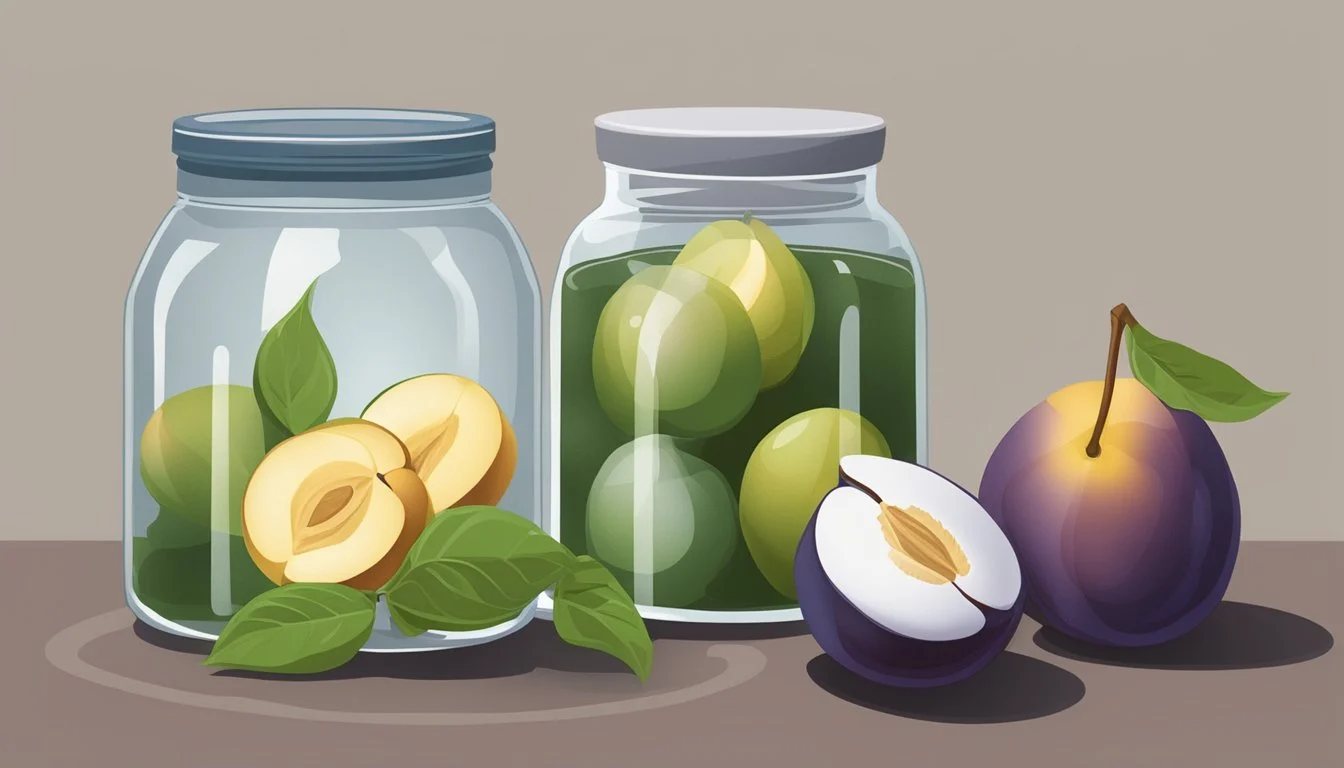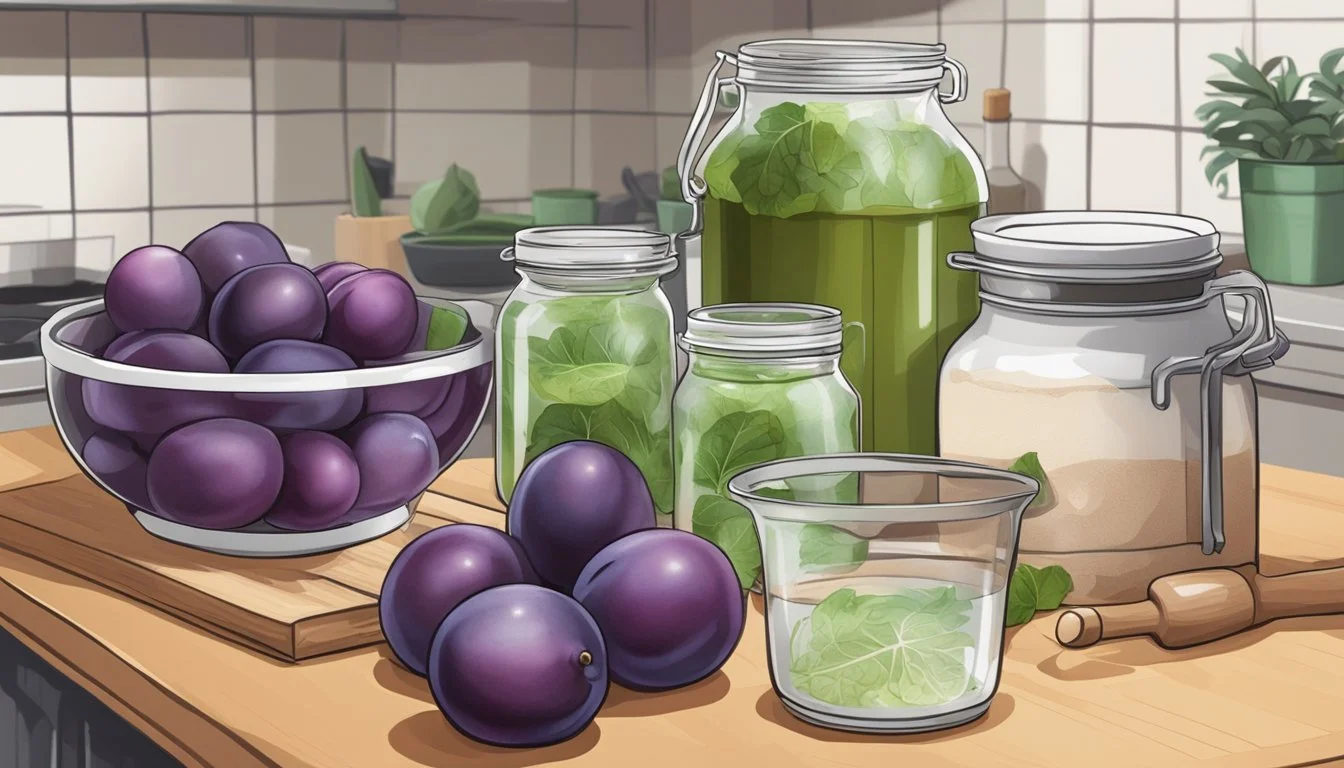How to Ferment Suanmeitang
Mastering the Art of Chinese Sour Plum Drink Fermentation
Suanmeitang, a traditional Chinese sour plum drink, is steeped in history and culture, recognized for its distinct tart flavor and cooling properties. Originally created for its therapeutic qualities, this beverage has evolved into a popular summer refreshment. Its ingredients evoke the ancestral wisdom of Chinese herbal medicine, combining smoked plums, hawthorn, licorice root, and sweetening agents, typically rock sugar, to achieve a complex taste profile. The process of fermenting Suanmeitang not only intensifies the flavors but also adds a unique depth that sets it apart from the non-fermented version of the drink.
This fermentation journey, an ancient practice, preserves the drink and enhances its refreshing essence, making it an ideal choice to combat the sweltering heat of summer months. The sour plums—also known as umeboshi in Japanese—are the cornerstone ingredient, supplying the sourness that defines the character of the drink. As they undergo fermentation, these plums release beneficial acids that contribute to Suanmeitang's reputation as a healthful option, aiding in digestion and potentially boosting the immune system.
Mastering the fermentation of Suanmeitang not only connects one to a time-honored culinary craft but also allows for a personal touch in flavor adjustment. While the traditional recipe calls for certain core components, the beautiful flexibility of fermentation means that enthusiasts can experiment with sugar levels and additional ingredients like osmanthus flowers or orange peel to tailor the drink to their palate. Whether served chilled as a refreshing summer beverage or enjoyed warm to soothe, Suanmeitang stands as a testament to the rich narrative of traditional Chinese beverages.
Historical Context
The Suanmeitang, a timeless Chinese sour plum beverage, traces its esteemed origins to imperial courts and has undergone a transformative evolution across numerous Chinese dynasties.
Origins in Imperial Courts
In ancient China, the Imperial Courts were centers of not only political power but also cultural innovation. Suanmeitang, with its sweet, sour, and slightly salty taste profile, is believed to have been a favored refreshment among the Imperial elite. Initially, it was more than a mere thirst quencher; it was interwoven with the principles of Traditional Chinese Medicine, where its ingredients were reputed for their health benefits.
Evolution Through Dynasties
The formulation and consumption of Suanmeitang adapted and varied as it passed through distinct Chinese dynasties. During the Song Dynasty (960-1279), for example, it became popularized among the public. The beverage reached a notable peak in its evolution during the Qing Dynasty (1644-1911), where it was commonly sold by street peddlers who signaled their presence with the distinctive clanging of copper bowls. Throughout the dynasties, Suanmeitang has maintained its place as a cultural staple, surviving up to the present day as a beloved traditional drink. Its longevity attests to its ingrained status within Chinese culture and its adaptability to the tastes of various eras.
Health Benefits
Suanmeitang, a traditional Chinese sour plum drink, provides several health advantages, particularly for digestion, nutrient intake, and influencing lactic acid production in the body.
Digestive Aid
Suanmeitang can serve as a beneficial digestive aid. Its sour and probiotic properties stimulate the digestive processes, making it potentially easier for the body to break down and absorb food. Digestion support is a crucial health benefit, as efficient digestion is fundamental to overall wellness.
Rich in Nutrients
The ingredients in Suanmeitang are sources of essential nutrients and vitamins. The plums themselves are rich in vitamin C and antioxidants, which can strengthen the immune system. Moreover, different recipes may include a variety of other healthful components that contribute additional vitamins and minerals to one's diet.
Effect on Lactic Acid Production
Regular consumption of Suanmeitang may have an effect on lactic acid production during exercise by altering the body's acidity level, which can influence muscle fatigue and recovery time. It is believed that the drink's alkaline nature could help in balancing the body's pH levels, potentially leading to enhanced athletic performance.
Key Ingredients Overview
In creating Suanmeitang, a traditional Chinese sour plum drink, the selection and balance of ingredients is crucial. The following subsections cover the principal components, flavor enhancers, and health-promoting additives that are integral to this fermented beverage.
Principal Components
Smoked Plums: Fundamental to Suanmeitang, they impart the characteristic sour flavor.
Rock Sugar: Often used to sweeten the drink and balance the tartness of the plums.
Salt: A small amount is sometimes included to enhance the overall flavor profile.
Flavor Enhancers
Osmanthus Flower: Adds a floral aroma and a mild sweetness.
Licorice Root: Provides a subtle sweetness and complexity to the drink.
Health-Promoting Additives
Hawthorn Berries: Believed to aid digestion and add a slightly tangy, fruity note.
Step-by-Step Fermentation Guide
The following guide provides a detailed approach to fermenting Suanmeitang, ensuring that the sour plum drink develops the desired flavor profile through careful ingredient preparation and controlled fermentation.
Preparing Ingredients
One begins the process by selecting quality dried smoked Chinese plums, known for their complexity of sweet, sour, and smoky flavors. The plums should be rinsed and then soaked in a mixture of clean water and other dried ingredients like hawthorn, licorice root, and chrysanthemum flowers for at least an hour to fully rehydrate them.
Initial Brewing Process
After soaking, the ingredients are transferred to a large pot. The blend is brought to a boil then the heat is reduced to achieve a gentle simmer. This simmering should be maintained for approximately 45 minutes to an hour, allowing the flavors to meld and the liquid to become infused with the rich essence of the ingredients.
Fermentation Technique
Once the initial brewing is complete, natural sweeteners such as rock sugar or honey are added to the mixture. The liquid is then allowed to cool to room temperature before transferring it to a sanitized, airtight fermentation vessel. Yeast, specifically chosen for fermenting beverages, is introduced to start the fermentation process. The vessel is stored in a dark, cool area and the drink is fermented for a period of weeks or months, depending on the desired level of fermentation and flavor development.
Post-Fermentation Handling
After fermentation is deemed complete, one must carefully strain the mixture to remove all solid particles. The final liquid is then transferred back into the pot to bring it to a boil to halt the fermentation process and ensure safety. The drink can be enjoyed immediately or chilled in the refrigerator to enhance its refreshing qualities. It is important to store Suanmeitang in the refrigerator to preserve its taste and prevent further fermentation.
Serving and Preservation
In the context of Suanmeitang, the focus is on delivering a refreshing drink experience and ensuring the beverage maintains its quality over time. The particulars of serving and preservations are key to achieving this.
Optimal Serving Conditions
Suanmeitang is traditionally served cold. To enhance the refreshment factor, one should serve it over ice. Using an ice cube tray, one can freeze some of the drink itself, ensuring that as the ice melts, it doesn't dilute the distinctive tart and sweet flavors of the drink. For immediate serving, one can chill the drink in a refrigerator or momentarily in a freezer, monitoring closely to prevent freezing.
Storing Practices
As for preservation, Suanmeitang should be kept in a sealed container when stored to maintain its flavors and prevent contamination. Refrigeration is essential, and the drink will remain in good condition for 3-4 days. For those who wish to prepare Suanmeitang using a pressure cooker, it is crucial to allow the drink to cool completely before transferring it to a storage container and placing it in the refrigerator.
Cultural Significance
Suanmeitang, a traditional Chinese beverage, has held a special place in the cultural landscape of China. Its roots are embedded in historical practices, and it continues to hold contemporary relevance, adapting to modern tastes and occasions.
Traditional Celebrations
Suanmeitang has been a staple in Chinese drink culture, especially prominent during festivals and significant events. In Sichuan and other regions, it's a refreshing choice during the Dragon Boat Festival and the Lunar New Year. These celebrations often call for foods and drinks with symbolic meanings, and Suanmeitang is believed to represent prosperity and health, key desires for the new year.
Contemporary Relevance
Today, the allure of this traditional Chinese beverage extends beyond festivities. Suanmeitang is enjoyed for its taste, and purported health benefits, such as aiding digestion and hydrating the body. Restaurants and modern beverage shops serve artisanal versions of the drink, indicating its seamless integration into daily life. This adaptation demonstrates the drink's enduring appeal and versatility in a rapidly modernizing society.
Tips and Variations
In the preparation of Suanmeitang, flexibility in sweetness levels and ingredient choices allows for customization according to personal taste preferences. This traditional drink, known for its sweet and sour profile, can be adapted using various natural ingredients like licorice and tangerine peel.
Adapting Sweetness Levels
To adjust the sweetness of Suanmeitang, one can vary the amount of rock sugar added to the mixture. The traditional recipe might suggest a specific quantity, but individuals can dial this up or down according to their own sweet preferences. It's important to add the sugar gradually, tasting as they go, to prevent the drink from becoming overly sweet.
Increase Sweetness: Add more rock sugar or stir in honey until the desired level is achieved.
Decrease Sweetness: Reduce the amount of rock sugar, or increase the sour components, such as hawthorn or smoked plum.
Alternative Ingredients
The inclusion of additional components like licorice root or tangerine peel imparts depth and complexity to Suanmeitang's flavor. While traditional recipes call for specific ingredients, experimenting with variations can create unique takes on the classic drink.
Licorice: Adds a subtle sweetness and is reputed to have medicinal properties.
Tangerine Peel: Offers a slightly tangy and refreshing note to the overall taste.
One can consider using different sour plums or even substituting honey for rock sugar to explore distinct flavors.
Non-Alcoholic Version
Suanmeitang is typically a non-alcoholic beverage, making it suitable for all ages. For those interested in maintaining the drink's authenticity and ensuring it remains non-alcoholic, it's important to rely on the natural fermentation of the ingredients rather than introducing any alcohol-based products.
Fermentation: One should allow the drink to ferment naturally by keeping it at room temperature for 1-2 days before refrigeration.
Consult Recipes: Ensure that any recipe followed does not call for alcohol as a base, preserving the traditional non-alcoholic character of Suanmeitang.







